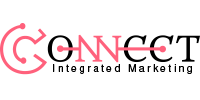Top Trends in White Label Web Design for 2025

In 2025, agencies are moving away from fully bespoke builds and embracing hybrid models that balance personalisation with efficiency. With white label web design, teams can deploy semi-custom frameworks that look distinct but save clients time and budget. This trend allows agencies to offer high-quality results without compromising scalability.
AI-Assisted Design with a Human Touch
Artificial intelligence is transforming how sites are created—automating layout suggestions, colour matching, and even content structuring. Yet, the most successful agencies know technology alone can’t capture brand essence. The future lies in blending AI precision with human creativity, producing designs that are both efficient and emotionally engaging.
Accessibility Becomes Non-Negotiable
Accessibility is no longer an afterthought. Clients now expect compliance with Web Content Accessibility Guidelines (WCAG) as a standard, not an add-on. This includes proper contrast ratios, text scalability, and intuitive navigation for users of all abilities. Agencies that integrate accessibility into every stage of design are setting the benchmark for professionalism.
Sustainability in Design Practices
Eco-conscious web design is taking centre stage. Energy-efficient coding, optimised image sizes, and sustainable hosting solutions are now part of a brand’s ethical footprint. Designers are prioritising lighter websites that load faster, consume less bandwidth, and reduce carbon impact—proof that digital design can support environmental responsibility.
Rise of Modular and Component-Based Design
Rather than building each page from scratch, modular design systems allow for reusable components. This ensures brand consistency across multiple sites while reducing development time. Agencies benefit from faster deployment, while clients enjoy uniformity and easier future updates—a win on both sides.
Advanced Personalisation Through Data
Users now expect experiences tailored to their behaviour. In 2025, dynamic content powered by user data—such as personalised product recommendations and adaptive layouts—has become standard practice. These intelligent systems increase engagement while enhancing conversion rates across industries.
Motion and Micro-Interactions Take the Lead
Small, purposeful animations are redefining user engagement. From subtle hover effects to micro-transitions that guide attention, movement is being used strategically to improve user experience rather than distract. It’s design that feels alive without overwhelming.
The Future is Collaborative
The most forward-thinking agencies are embracing open collaboration with developers, marketers, and brand strategists. Success now depends on teamwork, not silos. By combining expertise, white label web design agency continues to evolve as a flexible, results-driven model for modern digital growth.
